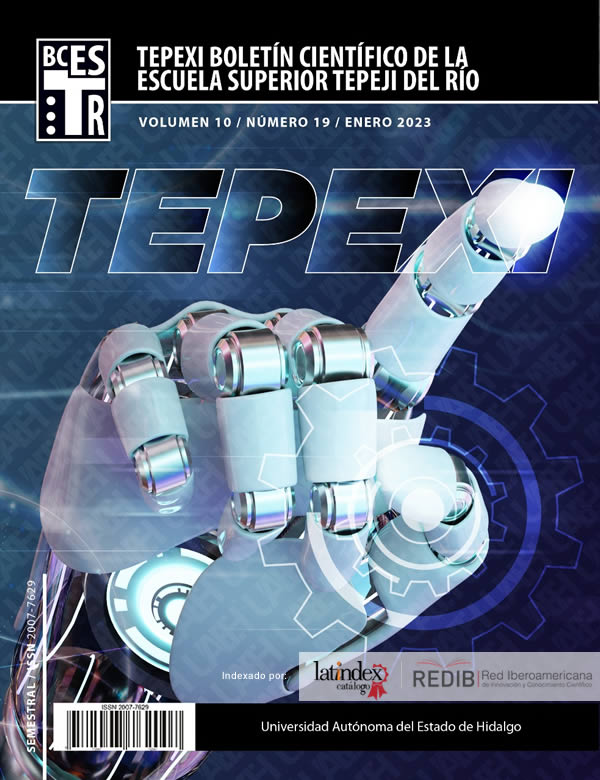Diagnostic tools in innovation
Abstract
As a result of two years of Covid-19 pandemic, in 2020 the 59.6% of small and medium-sized enterprises (SMEs) were closed and 23.1% more in 2021 (INEGI), so it is necessary to reactive them and think about the innovation factor, using diagnostic tools to develop the new ideas based on a methodology that is accessible to achieve the goals. This paper presents three of the most important diagnostic tools for the generation and implementation of innovation processes, such as: Triz Method, which stands out for being a methodology and a set of tools that manage a correlation matrix about problems and solutions, the Technology Management Method, which principal characteristic is offer models to use the technology more efficiently internally or externally, and finally the Roadmapping Method which establishes three basic actions, the first about the needs and technology required in the project, the second to establishment technology assessment mechanisms and the third a project coordination framework.
The research offers different ways to development and strengthening of SMEs, because every model can be adjusted to the needs and characteristics of the company, considering it a starting point for innovation and development for new technologies. However, it’s important to acquire an innovation culture in all the members of an organization, because the innovation not only applies to production also applies in leadership, process and management.
Downloads
References
Albiol, J., & Lloveras, J. (2009). Proyectos de innovación a través de Roadmaps. XIII Congreso Internacional de Ingeniería de Proyectos, pp.207-217.
Albiol, J., & Lloveras, J. (2010). Nueva Guía metodológica de Roadmapping para proyectos de innovación. Departamento de Proyectos de Ingeniería Universitat Politécnica de Catalunya, pp. 1-13.
Cordero, R. (10 de julio de 2018). Innovación y Emprendimiento, motores del cambio. Obtenido de http://www.rodrigocordero.org/triz-la-teoria-de-resolucion-de-los-problemas-inventivos/
Córdova Ames, W. (2008). TRIZ, la herramienta del pensamiento e innovación sistematica. Contabilidad y Negocios, 40.
Estrada , S., Cano , K., & Aguirre, J. (2018). ¿Cómo se gestiona la tecnología en las pymes? Diferencias y similitudes entre micro, pequeñas. Contaduría y Administración 64 (1) Especial Innovación, 2019, 1-21. Obtenido de file:///C:/Users/Pily/Downloads/GESTI%C3%93N%20TECNOL%C3%93GICA_1.pdf
García, M., & Bray, O. (1997). Fundamentals of Technology Roadmapping. Albuquerque: Strategic Business Development Department.
Hernández , L. (14 de Septiembre de 2020). México avanza al sitio 55 en el Índice Global de Innovación. El financiero. Obtenido de https://www.elfinanciero.com.mx/economia/mexico-avanza-al-sitio-55-en-el-indice-global-de-innovacion/
Hillegas, J. (2016). Roadmapping & Maturity Models: Coming to a View of the Forest. Bonneville Power Administration Technology Innovation Office , pp. 5-22.
INEGI. (2020). El INEGI presenta resultados de la segunda edicion del ECOVID-IE. Obtenido de https://inegi.org.mx/contenidos/saladeprensa/boletines/2020/OtrTemEcon/ECOVID-IE_DEMOGNEG.pdf
Innobasque, G. B. (2011). Roadmapping: Una herramienta para definir estrategias de I+D+i de éxito. En G. B. Innobasque. Laster Grafika.
Phaal, R. (2020). Roadmapping for strategy and innovation. University of Cambridge, pp.1-9.












